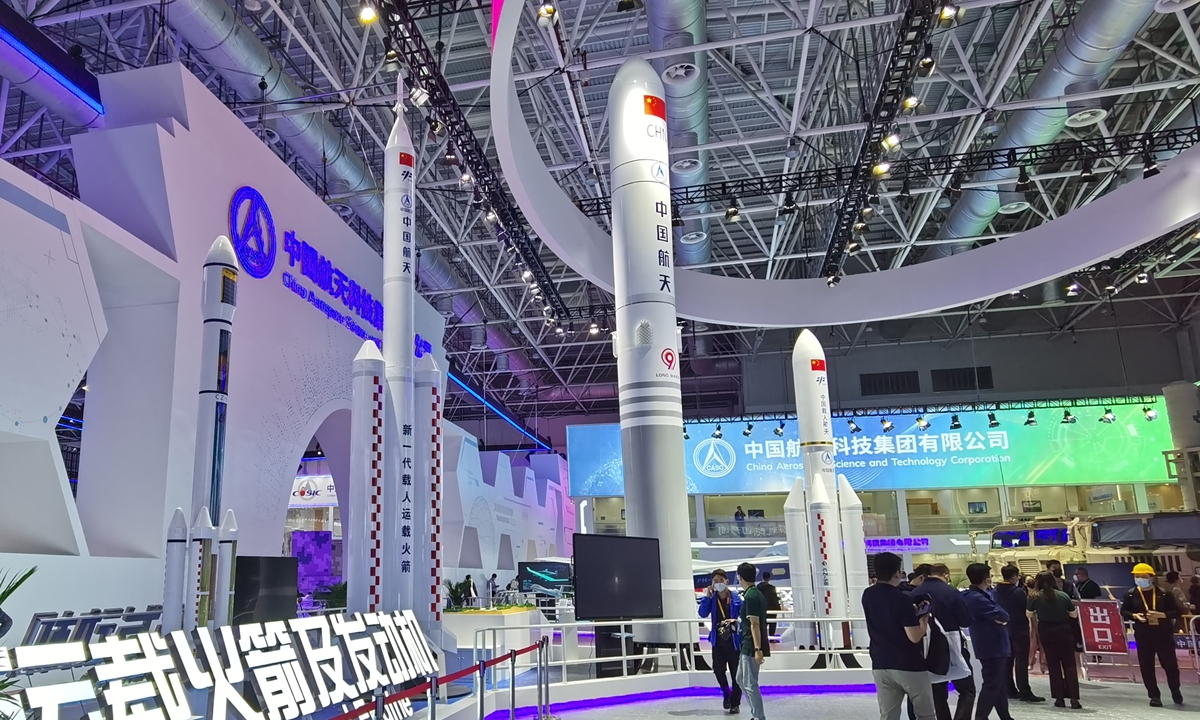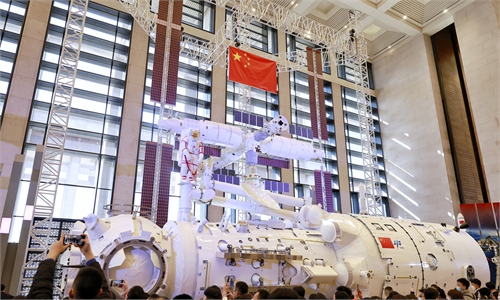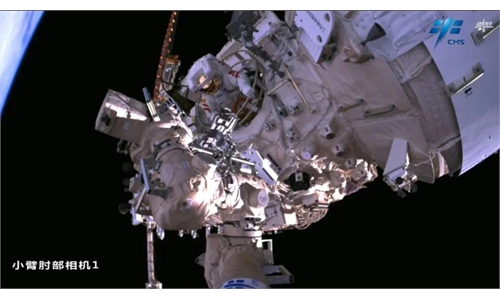60+ launches lined up; new-gen manned launch vehicle & super heavy-lift carrier rocket to debut in 2027, 2030: deputies, political advisors

CASC exhibition area at the 14th China International Aviation and Aerospace Exhibition in Zhuhai, South China's Guangdong Province Photo: Courtesy of CASC
In another ambitious step toward becoming a strong space power in the world, China will fully kick off the research and development of its Phase-4 lunar research project and planetary exploration project, as well as the development of the Chang'e-7 and Tianwen-2 probes, deputies of the national legislature political advisors from the space sector told the Global Times on Sunday during the ongoing two sessions.
More than 60 launches are scheduled for the Long March carrier rocket series in 2023, and another major rocket family for commercial spaceflights - the Kuaizhou - will also have a tight schedule with 8-10 launches expected this year, the Global Times has learned from Feng Jiehong, a deputy to the 14th National People's Congress (NPC) and head of Aerospace Sanjiang, a subsidiary of China Aerospace Science and Industry Corporation.
The new-generation manned launch vehicle is set to make its maiden flight by 2027, while the new super heavy-lift carrier rocket - the Long March-9 - will debut around 2030, the Global Times has learned.
Following the completion of its basic structure assembly, the China Space Station has entered normal operations mode and will welcome onboard the Xuntian space telescope before 2026, a task to be undertaken by a Long March-5B carrier rocket, Rong Yi, chief designer for the Long March-2F launch vehicle and a member of the Chinese People's Political Consultative Conference (CPPCC) National Committee, told the Global Times.
As for commercial spaceflight in China, market demand has been growing rapidly in recent years. According to an Iresearch survey, China has announced 12 plans for small satellite constellation networks in the next five to 10 years, which will comprise more than 2,200 satellites. They are mainly remote sensing and communication satellites.
If 8-10 satellites are released each launch, it will take nearly 300 missions to complete the task.
In addition to the Jielong-3 solid-propellant rocket, the Long March-2C and Long March-11 will undertake international commercial spaceflight missions, Wang Xiaojun, head of the state-owned China Academy of Launch Vehicle Technology, told the Global Times.
Wang revealed that China is developing a next-generation manned launch vehicle that will meet the long-term strategic need for manned lunar exploration. It will be capable of sending payloads of 70 tons into near-Earth orbit, and is expected to make its maiden flight by 2027.
It will be used to send a lunar surface lander and lunar landing spacecraft to the Lunar Transfer Orbit (LTO) using liquid hydrogen, liquid oxygen and kerosene propellants, capable of carrying payloads of no less than 27 tons to the LTO.
It will serve as an important strategic support to realize China's manned landing on the moon by 2030.
Rong disclosed that a new-generation manned spacecraft and a moon lander are being developed. The spacecraft will be able to accommodate three astronauts to the LTO and return them to Earth, while the lander could allow two people to carry out scientific experiments on the lunar surface.
The Earth-Moon space has become a new territory of manned activities in space for its rich material resources and unique environmental resources, which could become a new pillar of the national economy in the future as well as the "best sample" for studying the origin and evolution of the Earth.
Yang Mengfei, chief engineer of the Chang'e-5 probe and member of the CPPCC National Committee, proposed at this year's two sessions that China should grasp this opportunity and build Earth-Moon space infrastructure to utilize those resources, which China has already has the ability to do.
The new model super heavy-lift carrier rocket - the Long March-9 - is also under development. It will be a 10-meter-diameter, three-stage mega rocket with a height of 110 meters, capable of sending payloads of 150 tons into near-Earth orbit, 50 tons into the LTO and 35 tons to the Mars Transfer Orbit. The first flight of the Long March-9 vehicle can be expected around 2030.
In this year's government report delivered by Premier Li Keqiang at the first session of the 14th NPC on Sunday, Li elaborated on the fruitful achievements made in scientific and technological innovation in the past years including in areas of manned spaceflight, lunar and Martian exploration, and satellite navigation.



